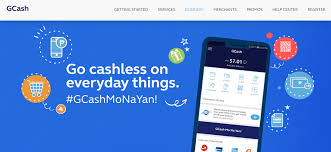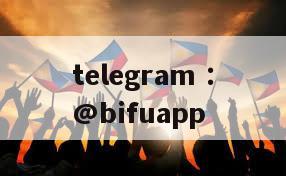In this episode of Payments Powerhouses, we will talk to Mary Li, founder and CEO of Atlas, to discuss the opportunities and challenges facing the travel industry and how to design innovative solutions to make travel more convenient and accessible. What’s more exciting is that Mary will reveal her valuable experience in her entrepreneurial journey from the unique perspective of a female leader.
Mary Li is a well-known entrepreneur and tourism industry expert. She is also the founder and CEO of Atlas, a new generation of low-cost airline service providers. Atlas is her third travel technology startup after Wigon Travel and Aslan, a Chinese B2B air ticket booking platform that was acquired by Alibaba’s Alitrip (now known as Fliggy).
Mary, welcome to Payments Powerhouses. First, please share the inspiration for your travel-related startup.
Mary: Both Aslan and Atlas were thought up by my daughter when she was a child. Aslan comes from [the golden lion that symbolizes justice in C. S. Lewis’ classic fantasy series The Chronicles of Narnia], and she wanted me to be a hero who saves the world. As for Atlas, she chose this name after she suggested naming the company with a global vision at a map exhibition at the National Gallery of Singapore.
As for why I am obsessed with the tourism industry - in fact, tourism was just a means of making a living for me at first, and over time, this state made me feel very frustrated. If I had not traveled in the past ten years, perhaps I would not have achieved what I have today, and I would not be sitting here to share my experiences with you. Traveling has given me a unique opportunity to let me realize the infinite possibilities of connecting the world. This is also the mission of my company and team: to provide everyone with affordable travel solutions. We hope to get more people on the road because travel can promote tolerance and understanding and make the world more harmonious.
Please tell us more about Atlas and its business scope
The business scope of the tourism industry mainly covers three aspects: air tickets, accommodation and activities; and Atlas mainly focuses on air tickets. We divide airlines into two categories according to different distribution channels: one is traditional airlines that distribute content through the global distribution system, such as Singapore Airlines; the other is low-cost or low-cost airlines that handle distribution business by themselves. Atlas works with such airlines to help them expand their market coverage. We integrate the content, services, pricing and inventory information of these airlines and publish them to travel agencies around the world through a simple API interface. Our goal is to make it easy for global travelers to access affordable tickets from low-cost airlines.
So far, we have integrated the resources of more than 200 airlines. Globally, about 50% of air transport capacity is undertaken by low-cost airlines, but many people do not realize this. Ignoring this means missing out on nearly half of the available flight resources.
First, let's talk about why low-cost airlines tend to choose independent distribution channels. Traditional global distribution systems (GDS) serve as a bridge between passenger booking ends and service providers (such as hotels, other accommodation providers and other travel-related service providers), often accompanied by high costs. For example, a one-way fare from Bangkok to Phuket on a Thai airline may be $40, but booking through a GDS requires an additional $5 to $10. For low-cost airlines, this part of the cost is huge.
In addition, traditional airlines sell package services to passengers. When passengers buy Singapore Airlines tickets, most people do not realize that they are also paying for additional services such as movies, games, music, and drinks. However, the younger generation of travelers pursue personalized choices and are unwilling to pay for services they don’t need in packaged services. They may prefer to use their own devices, watch what they want, or enjoy a quiet flight.
For the above reasons, the aviation industry has formed two different distribution channels, and this pattern has only gradually formed in recent years. There are not many companies that provide solutions to this problem. The advantage of low-cost airlines is that they can help travelers save costs and increase personalized services, but they also face distribution challenges. Language barriers are one of them. For example, Chinese travelers find it difficult to understand Thai flight information, and Singaporean travelers also have difficulties when booking tickets to South America. In addition, although the diversity of payment environments has brought convenience, it has also spawned payment fraud around the world.
Have some travel agencies benefited from your solution? How did you convince them to cooperate with Atlas?
Atlas is a relatively young company, founded in 2019, just before the outbreak of the epidemic. The situation was indeed not good at the time. Just when Atlas was beginning to take shape and making good progress, it encountered the epidemic, which forced us to temporarily close the distribution channel. It was not until August last year that we restarted the API service and gradually expanded the market. Despite this, we have established a good reputation in Europe and the Middle East, and more and more online travel agencies have contacted us for cooperation.
Can you tell us more about Atlas' solution, the Air Travel Retail and Information Platform (ATRIP)?
ATRIP is a very interesting platform. Last year, when we first started working with travel agencies, we found that engineers or product teams relied on email communication, which was very inefficient, so I had an idea: to build a platform to help our customers, that is, travel agencies, intuitively understand our APIs, products, and especially our core capabilities. At the same time, I am a very confident person and have never been afraid to show my abilities to the outside world. Even if someone imitates me, it doesn't matter. In my opinion, if a company or team's products can be easily imitated, it means that they are not strong enough. I am confident that the unique value of ATRIP cannot be replicated.
Adhering to the value of "open sharing", I encourage the team to visualize our API and show all the resources we have, so that travel agencies can clearly see how we solve their pain points and how they can benefit from our system integration and practical applications. We are transparent, so that travel agents can make informed choices, whether it is the number of airlines, our strengths or areas for improvement. This is the original intention that gave rise to ATRIP. Last year, we launched ATRIP Flight Deck, which serves as a control center for travel agents. This platform integrates all the information needed to effectively manage low-cost airline bookings, and is equipped with cutting-edge data intelligence technology to greatly improve operational efficiency.
Based on your observation, what trends or changes have occurred in the travel industry and customer behavior since the pandemic?
The overall performance of the Asia-Pacific region has declined. To this day, the region's capacity is still 40% lower than pre-COVID-19 levels. Why is this? Because of China's strict border control measures [Editor's note: China's borders have been reopened shortly after this podcast was recorded]. China accounts for more than 22% of the market share, especially in the ASEAN region, where these control measures have had a significant impact.
Take flights, for example. Airlines have been hit hard during the pandemic and have been forced to reduce flight frequencies. The surge in fuel prices has also made airlines particularly cautious when resuming more flight plans. Today, travelers who have travel plans generally find it expensive. Since March this year, the European economy has begun to recover, and its strong momentum has subsequently driven the economic recovery in the United States and the Middle East and North Africa. But in the Asia-Pacific region, each country has its own restrictions, and Asian people are more cautious about resuming travel.
Since 2021, we have observed an increase in the number of domestic flights in countries such as Indonesia, South Korea, Japan, Thailand and Vietnam. On a recent trip, I found that Chiang Mai is offering flight discounts to attract more Thai people to Chiang Mai. Siem Reap has also launched such activities for Cambodians.
During the epidemic, most tourism companies entered the "survival" mode. Now, as the industry gradually recovers, what can we learn from the previous "dark times"?
The tourism industry has advanced technology, but still retains a more traditional business model. Many companies tend to develop everything they need in-house. But I often reflect on what I am good at and what I am not good at. For non-core business areas, we adopt a cooperative model and hand them over to our partners. For example, in the payment link, we will cooperate with professional companies, including Antom's subsidiary 2C2P. I think everyone has limited time and resources, so why not focus on our own strengths while also giving other professionals and companies the opportunity to play to their strengths?
Looking back at 2019, when I meet with friends, they often ask me, "Mary, why are you so lucky while we are struggling to build our company?" I will tell them that I am not smarter than others, but my team and I focus on what we are good at, and I know where I am and where my company's strengths are.
What challenges does travel technology face today? What areas of innovation do you expect to see in the future?
First of all, glocalization is an important issue. What is "global"? What is "localization"? Traditionally, travel companies mostly use universal APIs, but in my experience, the needs of each country and each organization are different, and even the definition of the same term may be different. Terms such as "segment" or "immediacy" have different definitions in different countries. Therefore, I am thinking about how to build a platform through Atlas where global developers and operators can openly share localization experience and knowledge on this platform, so that convenient universal APIs can better adapt to localization needs. This is one of the problems we need to solve.
Another big challenge we face is in the payment process. Payment issues remain a major pain point for the tourism industry. How to achieve instant payment, reduce fraud risks, and effectively manage foreign exchange rates all require more innovative solutions.

Regarding the future development trend of the tourism industry, what do you think about the expansion opportunities that virtual reality (VR) or metaverse experiences may bring to the tourism industry?
The essence of travel includes two levels. One is what we call the "high touch" experience, that is, when you check into a hotel, you expect to be greeted by someone, smell good, and even get a hug. This is very much about connecting with people; otherwise, why do we travel? The other level is unique knowledge acquisition. When I was in a museum in Cairo, Egypt, I wanted to immerse myself in historical stories, as if I had traveled back thousands of years and talked face to face with the ancient Egyptian pharaohs. And this kind of experience that allows us to return to the past is exactly what AR technology and the metaverse can provide. I think they can greatly enrich the way we experience history, and learn from the past to avoid repeating the same mistakes.
As work-vacation and hybrid work models become the new norm, given your rich experience of living and working in multiple countries such as China, India, and Singapore, please share your insights on leading a diverse global team.
Many people have asked me how it feels to work in India for two years and how I adapted to life there. In fact, I not only adapted there, but I fell in love with India. Many people also ask me, you have been to so many places, which one is your favorite? I can't choose because I love every place I have been. If I hadn't been to so many places, I would never know how far I could go.
Atlas is a global company, which means we have an inclusive culture that accepts different cultures and all types of employees.
As the founder of the company, I spend a lot of time communicating with employees. I often tell everyone that I am not a hero, and the company's achievements today are inseparable from my team. I am responsible for communicating with employees, listening to their ideas, and sharing visions and strategies based on their different positions and cultural backgrounds to ensure that everyone understands the company's strategic direction.
My day starts with a meeting with the New Zealand team at 7 am and ends late at night after completing the communication with the European team. But what I really care about is whether my team members are happy. I tell everyone that whenever they need help, they can send me a message. I will listen carefully to their voices and try my best to answer their confusion.
I have always believed that there is nothing special about me. I am just an ordinary middle-aged Chinese woman. The real hero is my team. All my work and all my responsibilities are to set the stage for the team and let them shine.
Do you have any good advice for the leadership team of startups, especially female leaders?
I usually don’t take the initiative to provide such advice because I believe that everyone has their own way to go, and all personal experiences constitute life itself. But I can share my own methods. In 2023, I chose a keyword for myself: sincerity. Why sincerity? I am a female CEO and an ordinary woman. I also play the role of mother and daughter. Facing my true self means showing my true self in full and accepting my weaknesses. I am happy to accept my appearance, physical condition and emotional changes, and I also frankly recognize my competitiveness and ability to develop perfect products. This sincerity makes me feel relaxed and relieved.
Many female leaders, and women in general, have a hard time being satisfied with themselves, often doubting whether they are doing enough or being too hard on themselves. I used to get stuck in that trap of self-blame, questioning myself: “Why am I not good enough? Why can’t I do things better?” I used to underestimate myself, and this question bothered me for a long time until I realized the importance of being authentic to myself, my team, and everyone around me. If I had to give one piece of advice to women around the world, especially female leaders, it would be: Be more confident.
This is great advice. Do you set yourself goals like this every year?
Yes, I do. I love reading novels, but when setting goals, my daughter suggested that I should be more down-to-earth, improve my skills, and read more business-related books. Although there are some things I don’t like to do, sometimes we have to do things that we don’t like to do. So this year I plan to listen to more industry-related podcasts and read more research reports. This is one of my goals.
“Payments Powerhouses” is a monthly feature series focusing on interviewing leaders in the payment and fintech fields in Southeast Asia and around the world.

 bifu pay
bifu pay





发表评论
发表评论: